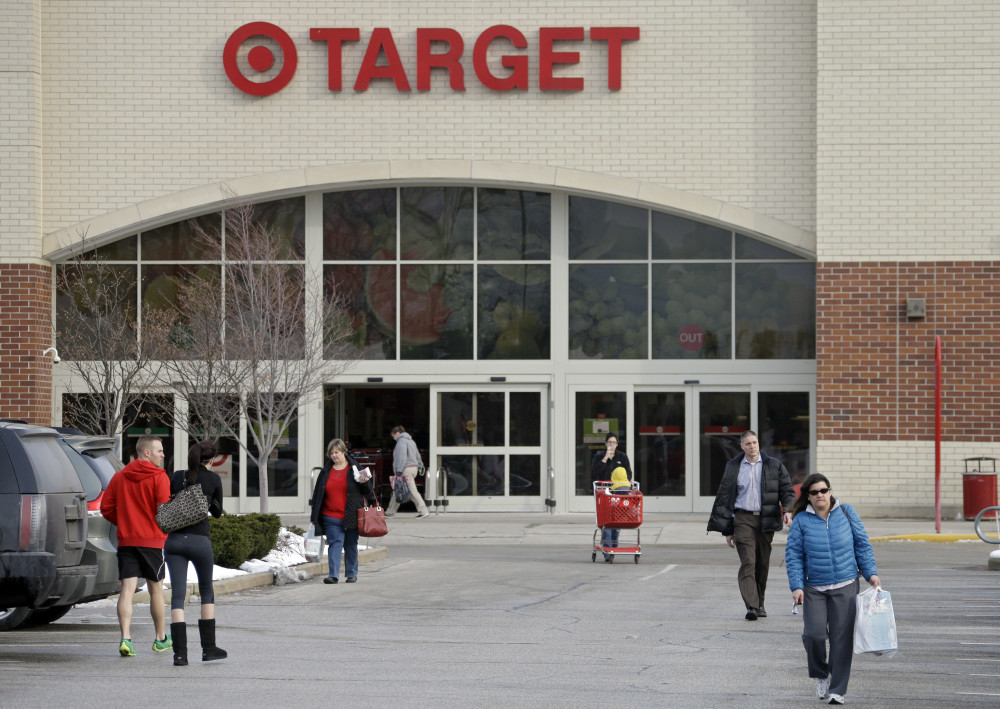By Thomas Lee
San Francisco Chronicle.
WWR Article Summary (tl;dr) Women and Business may want to consider Target (Yes the discount retail giant) when getting ready to pitch their next high tech product. Despite its’ discount heritage, the retailer has established itself as a serious player in the global fashion industry and now it is applying the same formula with Silicon Valley. Specifically Target is focusing on the Internet of Things — products that are connected through a wireless network. At a recent Target pitch session, entrepreneurs, peddled everything from high-tech breast pumps to “smart” diapers!
San Francisco Chronicle
One by one, the entrepreneurs marched into the conference room in downtown San Francisco, explained how their technology solved a problem, and dutifully answered questions about pricing, marketing and intellectual property. Just another day in a region awash with ideas and cash.
Only the audience wasn’t a clutch of venture capitalists, but rather Target executives from Minnesota. Instead of presenting a mobile app to brash, “Shark Tank”-style investors in sunny Palo Alto, the entrepreneurs were pitching Internet-connected baby gadgets to cheery merchandisers from a state mostly known for freezing winters and polite passive aggression.
The entrepreneurs, peddling everything from high-tech breast pumps to “smart” diapers, were hoping to score perhaps something more valuable than an investor check: a coveted spot on the website and store shelf of the country’s second-largest discount retailer. Such distribution power can give even the most bootstrapped startup instant sales and credibility.
Target is also searching for credibility, but of a different kind.
Despite its discount heritage, the retailer has established itself as a serious player in the global fashion industry, recruiting emerging designers like Jason Wu and Lilly Pulitzer to create unique merchandise for Target customers. In a way, the company is applying the same formula with Silicon Valley, specifically the Internet of Things — products that are connected through a wireless network.
Target normally doesn’t invite reporters to observe meetings with potential vendors, but the company seems eager to demonstrate its tech shops.
Now more than ever, Target wants to get ahead of fast-moving trends, said Vice President Amanda Nusz, general merchandise manager and the company’s top buyer for baby products. And yes, that could mean selling products consumers do not yet know that they want.
“We don’t want to be a fast follower,” she said.
Last summer, Target introduced Open House at its Metreon location in San Francisco. The space acts as a showroom for Internet of Things technology, where people can learn about how household devices automatically communicate with each other through the Internet to solve a problem. For example, a sensor detects a baby crying in the crib and activates a night light and soothing music.
Beyond urban showrooms like Open House, Target will find it difficult marketing the Internet of Things to consumers on its website and 1,500 stores across the United States, said Amy Koo, an analyst with Kantar Retail consulting firm. The concept is not easy to explain.
Though people can buy the products there, the goal of Open House is to learn and experiment. It’s also to signal to the broader tech community that Target is serious about the Internet of Things, company officials say.
buy synthroid generic buy synthroid online no prescription
One area Target is trying to figure out is privacy and security. Critics worry that criminals could hack into these devices and effectively gain control of an entire smart home.
“It’s definitely something that we are thinking about,” said Gene Han, a vice president who heads Target’s innovation center in San Francisco, where the startup pitch meeting was held. “We’re going to put some resources behind this and start to get smarter about where this space is going, knowing this is a key enabler for the Internet of Things.”
Beyond security, there is the more basic question about whether any of these smart products truly provide any value to consumers or are just fancy gadgets searching for a purpose. The baby category seems particularly prone to this problem.
“Someone came up with a baby bottle that showed you how much the baby drank,” said Steven Dunn, founder of Munchkin, a key supplier to Target, who also attended the demo event. “Well, we have ounce markings on the bottle. If you put 4 ounces in and have 2 ounces left, the baby must have drunk 2 ounces. That’s a perfect example of Internet-connected technology that probably doesn’t work.”
That’s why Target must adopt new approaches like Demo Day to not only directly meet people behind the startups but also to properly evaluate the technology and the entrepreneurs.
“I do think I need to make different relationships, and try to go more to the source of ideas,” Nusz said.
So how did Target do? The buyers seemed particularly impressed with Moxxly, a startup that makes a breast pump equipped with a sensor that transmits data about the amount of milk and the flow rate to a mobile app. Such information could help women determine the ideal time of day to pump milk.
At $145, the price seems rather high. But Target officials liked the attractive design and ease of use, since mothers don’t have to remove clothing or buy a special bra.
“We’re bringing the cool back to the breast pump category, if there was ever a time it was cool,” Moxxly CEO and co-founder Cara Delzer joked to the group.
The group seemed considerably less enthusiastic about a British entrepreneur who made his pitch about a smart pacifier via Skype. Problems with the online connection certainly didn’t help.
“That was a disaster,” one person in the room said.
Target and its customers “have to learn a lot together because Internet of Things is very new,” Nusz said. “I don’t think we have figured this out yet.”
__________________________________
Thomas Lee is a San Francisco Chronicle columnist. He is author of “Rebuilding Empires” (St. Martin’s Press), on the future of big-box retail in the digital age.














































































































































































































































































































































































